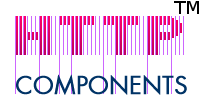Logging Practices
Being a library HttpClient is not to dictate which logging framework the user has to use. Therefore HttpClient utilizes
the logging facade provided by the Simple Logging Facade for Java (SLF4J) package. SLF4J provides
a simple and generalized log interface to various logging packages. By using SLF4J,
HttpClient can be configured for a variety of different logging behaviours. That means the user will have to make a
choice which logging implementation to use. There are several popular logging backends that can be used through
the SLF4J facade APIs:
-
SimpleLogger (internal to
SLF4J) -
java.util.logging (internal to
SLF4J)
HttpComponents project however mostly works with Log4j 2 backend and recommends it to our users.
HttpClient performs three different kinds of logging: the standard context logging used within each class, HTTP header logging and full wire logging.
Understanding Logger Names
Most logging implementations use a hierarchical scheme for matching logger names with logging configuration. In this
scheme, the logger name hierarchy is represented by ‘.’ characters in the logger name, in a fashion very similar to
the hierarchy used for Java package names. For example, org.apache.logging.appender and org.apache.logging.filter
both have org.apache.logging as their parent. In most cases, applications name their loggers by passing the current
class's name to LogManager.getLogger(...).
Context Logging
Context logging contains information about the internal operation of HttpClient as it performs HTTP requests. Each class
has its own logger named according to the class's fully qualified name. For example the class DefaultHttpClient has a
logger named org.apache.http.impl.client.DefaultHttpClient. Since all classes follow this convention it is possible to
configure context logging for all classes using the single logger named
org.apache.hc.client5.http.
Wire Logging
The wire logger is used to log all data transmitted to and from servers when executing HTTP requests. The wire logger
uses the org.apache.hc.client5.http.wire logger name. This logger should only be enabled to debug problems, as it will
produce an extremely large amount of log data.
HTTP header Logging
Because the content of HTTP requests is usually less important for debugging than the HTTP headers, use the org.apache.hc.client5.http.headers logger for capturing HTTP headers only.
Configuration Examples
SLF4J can delegate to a variety of logging implementations for processing the actual output. Below are configuration
examples for Log4j 2, Commons Logging, and java.util.logging.
Log4j 2 Examples
The simplest way to configure Log4j 2 is via
a log4j2.xml file. Log4j 2
will automatically configure
itself using a file named log4j2.xml when it's present at the root of the application classpath.
Below are some Log4j configuration examples.
Note: The Log4j 2 implementation a.k.a “core” is not included in the HttpClient distribution. You can include it
in your project using Maven, Ivy, Gradle, or SBT.
-
Enable header wire + context logging - Best for Debugging
<Configuration> <Appenders> <Console name="Console"> <PatternLayout pattern="%d %-5level [%logger] %msg%n%xThrowable" /> </Console> </Appenders> <Loggers> <Logger name="org.apache.hc.client5.http" level="DEBUG"> <AppenderRef ref="Console"/> </Logger> <Logger name="org.apache.hc.client5.http.wire" level="DEBUG"> <AppenderRef ref="Console"/> </Logger> <Root level="INFO"> <AppenderRef ref="Console" /> </Root> </Loggers> </Configuration> -
Enable full wire + context logging
<Configuration> <Appenders> <Console name="Console"> <PatternLayout pattern="%d %-5level [%logger] %msg%n%xThrowable" /> </Console> </Appenders> <Loggers> <Logger name="org.apache.hc.client5.http" level="DEBUG"> <AppenderRef ref="Console"/> </Logger> <Root level="INFO"> <AppenderRef ref="Console" /> </Root> </Loggers> </Configuration> -
Enable context logging for connection management
<Configuration> <Appenders> <Console name="Console"> <PatternLayout pattern="%d %-5level [%logger] %msg%n%xThrowable" /> </Console> </Appenders> <Loggers> <Logger name="org.apache.hc.client5.http.impl.io" level="DEBUG"> <AppenderRef ref="Console"/> </Logger> <Logger name="org.apache.hc.client5.http.impl.nio" level="DEBUG"> <AppenderRef ref="Console"/> </Logger> <Root level="INFO"> <AppenderRef ref="Console" /> </Root> </Loggers> </Configuration> -
Enable context logging for connection management / request execution
<Configuration> <Appenders> <Console name="Console"> <PatternLayout pattern="%d %-5level [%logger] %msg%n%xThrowable" /> </Console> </Appenders> <Loggers> <Logger name="org.apache.hc.client5.http.impl" level="DEBUG"> <AppenderRef ref="Console"/> </Logger> <Root level="INFO"> <AppenderRef ref="Console" /> </Root> </Loggers> </Configuration>
The Log4J 2 manual is the best reference for how to configure Log4J 2. It is available at
https://logging.apache.org/log4j/2.x/manual/.




